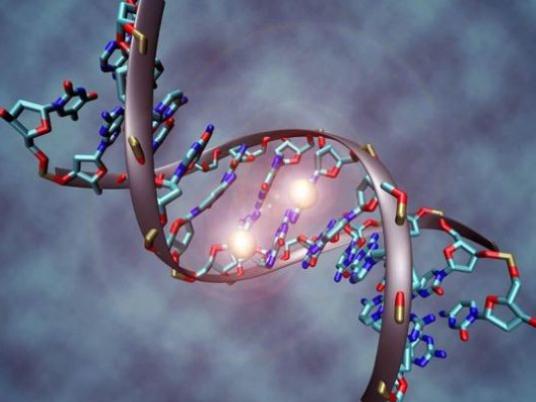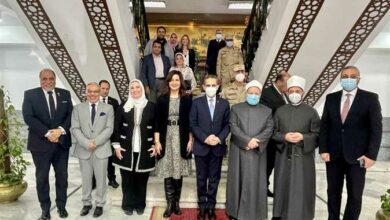
Though it’s been almost 10 years since the sequence of the entire human genome ― 23,000 genes ― was completed, genetic research is vigorously ongoing, as our understanding of our genetic makeup still has many gaps.
Globally, only 14,000 genes have been properly identified, and the functions of very few have actually been determined. Even less available is genetic information specific to the Arab region, politically defined as stretching from Morocco to Iraq.
To counter this, and hence join the human genome race, the Center for Arab Genomic Studies (CAGS) in Dubai has begun compiling an extensive database of regional studies. Out of the hundreds of thousands of studies collected thus far, only 20 percent have been analyzed and included in the database, albeit with interesting results.
According to Ghazi Tadmouri, assistant director at CAGS, the database so far indicates the presence of at least 1,016 genetic disorders in Arab states, a significantly large number for one region.
Genetic disorders are abnormalities in the gene structure that can lead to birth conditions such as Down syndrome, as well as thousands of other less-known disorders. Considering the uneven distribution of data across the region, analysis has revealed that at least 550 of these disorders are specific to Gulf countries alone, followed by 150 in Egypt and 100 in Morocco.
Though globally 7,000 genetic disorders have thus far been identified, Tadmouri says that the nature of the disorders in Arab states is slightly more precarious than that of average disorders. Genetic scientists attribute this to the practice of consanguinity ― the marrying of close ancestral relatives ― which is prevalent in the region, as well as the region’s demographic history.
Disorders prevalent in the region are predominantly the result of recessive, rather than dominant, genes, meaning that both parents must have the genetic mutation in order for the child to exhibit observable characteristics. At least two-thirds of the disorders in Arab states are recessive, and one-quarter dominant, compared to an almost 50-50 breakdown globally.
Usually, a lower percentage of dominant gene disorders would signify a positive, but unfortunately for the Arab region, the number of recessive gene mutations that can be combined to produce genetic birth diseases is remarkably high. Globally, recessive disorders usually stem from about five to six gene mutations, but the center’s research has thus far identified over 30 recessive gene mutations in the region.
According to Tadmouri, this makes it very difficult to identify genetic mutations, as many are unique and hence unmapped. It also makes procreation riskier, as many partners may not know they have a unique, underlying genetic mutation, resulting in unpredictable birth defects.
“This high variability of mutations of recessive gene disorders can be linked to the region’s demographic history of invasions, trade routes and mixed populations, followed by close-knit families, tribes or countries amplifying these externally unobservable gene mutations over generations through consanguinity,” says Tadmouri.
Research is revealing that there is a correlation between prevalence of recessive genetic mutations and consanguinity rates, which vary from about 25 to 60 percent throughout the Arab region.
Tadmouri believes that these results should inform partners to take precautions before having children.
“It is very important that families look back into their family tree to see if there were any odd occurrences of children born with genetic disorders, and if so, its important to get tests done as soon as possible,” he adds.
Tadmouri also believes that genetic counseling for partners in the region ― as well as appropriate management of patients with genetic disorders ― will have to become more common if parents wish to avoid unpredictable birth disorders. However, at the present time, this sort of counseling is practically non-existent.
“The more extensive the database becomes, the better we will understand how to inform future parents,” he says. “However, some partners with prevalent mutations will inevitably be advised to procreate far from their own gene pool, and this may be an undesired situation, particularly if already married.”
The center is currently busy completing the database, and despite Tadmouri believing that gene mutation statistics may in fact turn out higher, he believes it is nonetheless exciting that the Arab region has now joined the genetics research race.
“It will only be a positive in the long run, as informed precautions can be taken,” says Tadmouri. “But scientifically, it presents a golden opportunity for Arab scientists to step into the ‘omics’ [fields of study in biology] era by coordinating a long-awaited Arab Human Variome [set of genetic variations] Project.”




